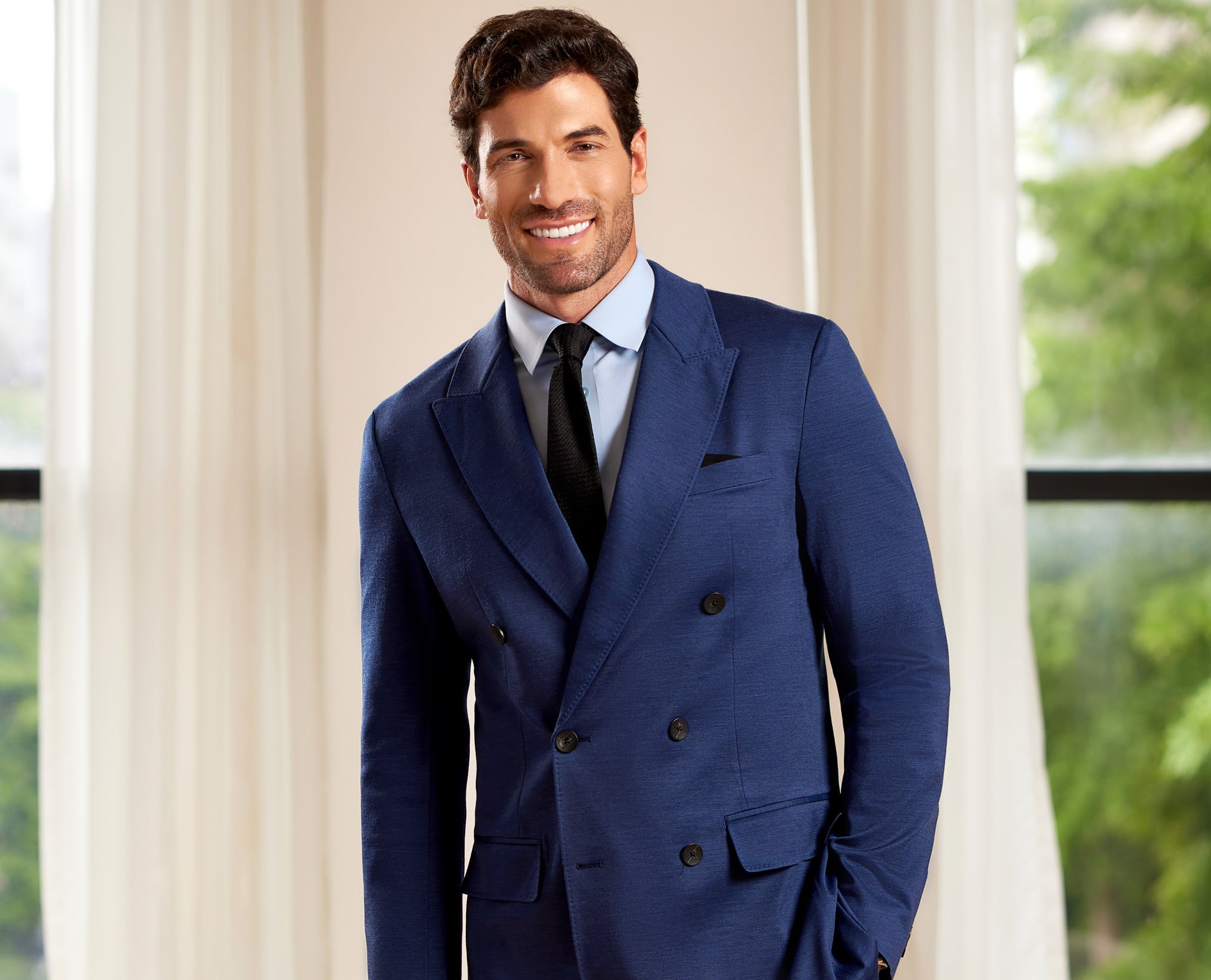Suits have long been a cornerstone of men’s fashion, offering elegance and formality in various styles. Among the different types, single-breasted and double-breasted suits are two classic options that often leave men wondering: which one is right for me? Understanding the key differences in style, functionality, and versatility between these two options can help you make the best choice for any occasion.
What is a Single-Breasted Suit?
A single-breasted suit is the most common type of suit jacket you'll see today. It features a single column of buttons down the front, usually one, two, or three buttons, and a narrow overlap of fabric when fastened.
- Style Versatility: Single-breasted suits are incredibly versatile and work well in both formal and casual settings. Whether you're dressing up for a business meeting or attending a wedding, a single-breasted suit is adaptable to most occasions.
- Flattering Fit: This suit style tends to offer a more streamlined silhouette, making it a great option for all body types. The minimal structure can elongate the torso, especially for bigger or taller men, helping create a balanced look.
- Commonality: Single-breasted suits dominate the market, making it easier to find various designs and fabrics in this style. It's a safe, go-to choice for men who want a classic, easy-to-style suit.
What is a Double-Breasted Suit?
A double-breasted suit features two parallel columns of buttons, usually with six buttons in total (though variations exist with four or even eight). The jacket overlaps more than a single-breasted jacket, creating a bolder and more structured look.
- Classic, Formal Look: The double-breasted suit has a long history in men’s fashion and is often associated with formality and power. It makes a statement, giving you a more commanding presence, which is why it’s often seen in high-end business or formal settings.
- Enhanced Structure: The extra buttons and overlapping fabric give the jacket more structure, which can work well for slimmer or athletic builds. This suit style offers a more squared, boxy appearance, adding a sense of formality and strength to your look.
- Less Common, But Bold: Although it's not as popular as the single-breasted suit, a double-breasted jacket exudes confidence and uniqueness. If you're looking to stand out at a formal event, this could be the right choice.
Style Differences: Single vs. Double Breasted
While both styles are rooted in tradition, the key differences between single and double-breasted suits go beyond just the buttons. Let’s break down the distinct style elements:
a) Button Configuration and Placement
- Single-Breasted: Typically features one to three buttons in a single row. It's straightforward and minimalistic, ideal for versatile styling.
- Double-Breasted: Usually features four to eight buttons in two parallel rows. The additional buttons make for a more complex design and stronger visual impact.
b) Silhouette and Fit
- Single-Breasted: Offers a more relaxed fit, with a focus on elongating the body and creating a streamlined appearance. It's often considered more forgiving for various body types, especially for men with broader frames.
- Double-Breasted: The overlap of fabric creates a sharper, more structured silhouette. It can emphasize the shoulders and chest, which can be flattering for men with athletic or slimmer builds but might feel bulky for those with a broader body.
c) Formality and Occasion
- Single-Breasted: Works in almost any situation, from casual outings to formal events. It’s the more versatile option if you want a suit that transitions easily across different settings.
- Double-Breasted: Leans more toward formal settings. It’s ideal for business meetings, weddings, and formal events where making a bold impression is key.

Which Suit is Better for Your Body Type?
The suit style you choose can significantly impact how comfortable and confident you feel. Here’s how each type of suit flatters different body types:
- For Bigger or Taller Men: A single-breasted suit is usually the better choice. Its minimal structure creates a streamlined look that doesn't add bulk, and it helps elongate your frame. However, if you like the formal look of a double-breasted suit, go for one with a lower button stance to avoid adding width to your midsection.
- For Slimmer Men: A double-breasted suit can help create the appearance of a broader chest and shoulders due to its more structured design. The extra layers of fabric can add visual weight, which can be advantageous for those with thinner frames.
Why Performance Fabrics Matter in Both Styles
Regardless of whether you choose a single or double-breasted suit, the fabric can make or break the comfort and functionality of your outfit. Performance fabrics, like those used in xSuit’s collections, offer several advantages:
- Stretch and Flexibility: Whether it’s the slim, minimal cut of a single-breasted suit or the structured look of a double-breasted jacket, performance fabrics provide stretch for a more comfortable fit.
- Wrinkle and Stain Resistance: Performance suits are often designed to be low maintenance, offering resistance to wrinkles and stains. This is especially helpful if you need your suit to look crisp throughout the day, whether you're sitting at a desk or attending events.
- Breathability: Traditional wool suits can feel heavy, especially during long wear. Performance fabrics are often lighter and more breathable, helping you stay cool and comfortable in any setting.
Which Suit is Right for You?: Single or Double-Breasted Suit?
When choosing between a single-breasted and double-breasted suit, consider your personal style, body type, and the occasions where you’ll be wearing the suit. Here’s a quick breakdown:
- Go for a Single-Breasted Suit if:
- You need a versatile option for both casual and formal settings.
- You prefer a more relaxed, streamlined silhouette.
- You want a suit that’s easier to find and tailor for your body type.
- Opt for a Double-Breasted Suit if:
- You want to make a bold, confident statement.
- You prefer a more structured, formal look.
- You have a slimmer or athletic build and want to emphasize your chest and shoulders.
Knowing The Difference Between Single and Double-Breasted Suits
Both single-breasted and double-breasted suits have their place in a well-rounded wardrobe, and the choice largely depends on your personal style, body type, and the occasions you need the suit for. If you’re after versatility, a single-breasted suit is the way to go. But if you want to stand out and make a strong impression, a double-breasted suit offers the formality and structure that will set you apart. Ultimately, choosing the right suit is about how you feel wearing it—and with the right fit and fabric, either style can help you look and feel your best.


